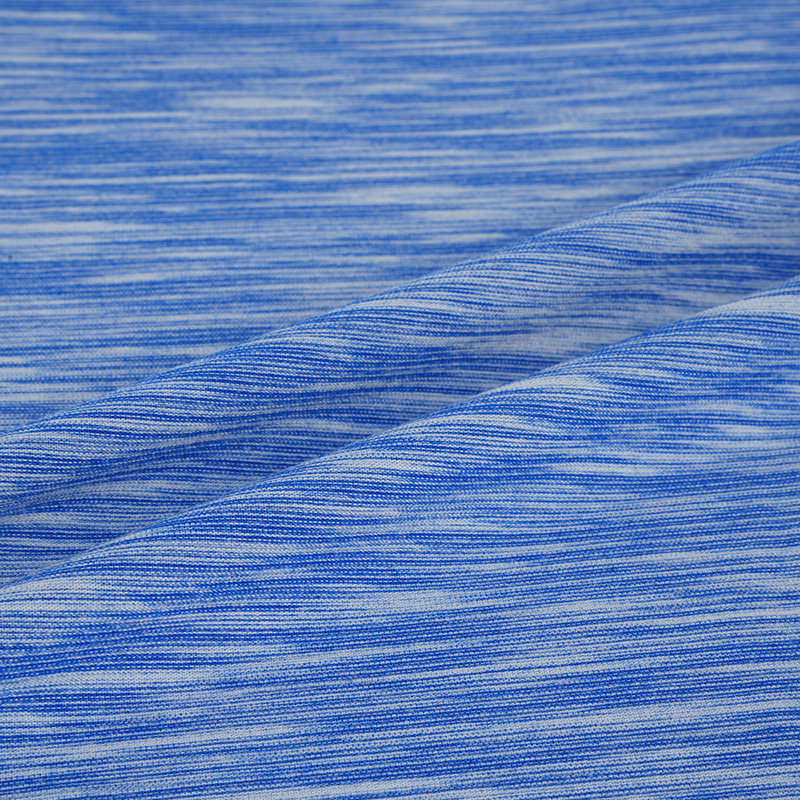We are located in Haining City, Zhejiang Province, one of China's famous knitting industrial Bases.
Mesh fabric is widely used in apparel, outdoor gear, furniture, and industrial applications due to its breathability, flexibility, and lightweight nature. However, despite its open structure, the strength and tear resistance of mesh fabric are critical qualities that determine its durability and suitability for specific uses. Several factors influence these properties, ranging from material selection to construction techniques.
Content
1. Material Composition
The choice of fibers is the foundation of a mesh fabric’s strength. Common materials include polyester, nylon, cotton, and blends with elastane or spandex.
- Polyester: Offers high tensile strength, excellent resistance to stretching, and good resistance to moisture and UV degradation.
- Nylon: Known for its superior strength-to-weight ratio and abrasion resistance, making it ideal for heavy-duty applications.
- Cotton: Provides comfort and breathability but has lower tear resistance and is prone to weakening when wet.
- Blends: Combining synthetic and natural fibers can balance comfort, elasticity, and durability.
The molecular structure and fiber diameter significantly influence tear resistance. Thicker, high-tenacity fibers provide better resistance to punctures and rips.
2. Yarn Density and Diameter
Mesh fabrics are defined by their open weave or knit pattern, but the thickness and density of the yarns used directly affect their strength.
- Higher Yarn Density: Fabrics with closely spaced yarns resist tearing better because there is more material to distribute force.
- Yarn Diameter: Thicker yarns can withstand greater stress and are less likely to break under tension.
A balance must be maintained, as very dense or thick yarns can reduce the breathability that makes mesh fabric desirable.
3. Weave or Knit Structure
The method of construction—whether woven or knitted—plays a crucial role in strength and tear resistance.
- Woven Mesh: Typically more stable and resistant to stretching, with warp and weft threads tightly interlaced to prevent deformation.
- Knitted Mesh: Offers more elasticity and flexibility but may be more prone to snagging or tearing under point loads.
Specialized weaves, such as reinforced or double-layer meshes, can significantly enhance tear resistance while maintaining airflow.
4. Coatings and Treatments
Many mesh fabrics are treated or coated to improve durability.
- Polyurethane or PVC Coatings: Increase abrasion resistance and reduce fiber fraying.
- UV or Water-Repellent Treatments: Prevent degradation from sunlight and moisture, which can weaken fibers over time.
- Anti-Snag Treatments: Enhance resistance to tearing in high-contact areas.
These treatments add an extra layer of protection, especially in outdoor or industrial applications.

5. Environmental Conditions and Load Factors
Even strong mesh fabrics can fail under extreme conditions if not properly chosen for the application. Factors such as sustained tensile loads, repeated stretching, sharp objects, exposure to chemicals, heat, or sunlight can accelerate wear and tear. Designers must consider the intended environment when selecting fabric type, density, and protective treatments.
6. Quality Control and Manufacturing Standards
Consistent manufacturing processes ensure uniform yarn tension, proper bonding, and precise knitting or weaving. Irregularities, weak points, or inconsistent tension can create stress concentrations that reduce tear resistance. High-quality mesh fabrics undergo rigorous testing for tensile strength, tear resistance, and abrasion resistance to ensure reliability.
Conclusion
The strength and tear resistance of mesh fabric are determined by a combination of material selection, yarn properties, construction techniques, protective treatments, and environmental factors. By carefully balancing these variables, manufacturers can produce mesh fabrics that are durable, functional, and suitable for a wide range of applications, from breathable sportswear to heavy-duty industrial materials. Proper maintenance and usage within designed limits further ensure the longevity of mesh fabrics, allowing them to withstand daily wear and challenging conditions.

 English
English  Español
Español  عربى
عربى 













